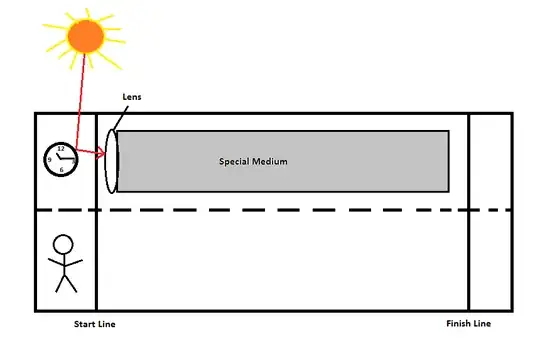Yes, it is theoretically possible.
For example, you could use two parallel, perfectly reflecting mirrors of length $L$, where $L$ is the distance between point A and point B. Let the distance between the two mirrors be $d$.
Assuming that the ray of light enters the two mirror by hitting one of them close to point A at an angle $\theta$, it will be reflected
$$N \approx \left ( \frac{L}{d \tan \theta} \right)$$
times before arriving at point B, covering a distance
$$l = N \frac d {\cos \theta} \approx \left ( \frac{L}{d \tan \theta} \right) \frac d {\cos \theta} = \frac L {\sin \theta}$$
in the process. Notice that the result does not (somewhat surprisingly) depend on $d$.
Therefore, the time needed to go from point A to point B for the ray of light is
$$t=\frac l c \approx \frac L {c \sin \theta}$$
You can therefore define an "effective speed" $v_e$ for the ray,
$$v_e \equiv c \sin \theta$$
If the speed of a human is $v_h$, the human will be faster than the light ray if
$$v_h > v_e \ \Rightarrow \ \sin \theta < \frac{v_h} c$$
The record speed for a running human (*) is $44.72$ km/h (Usain Bolt, 2009). The speed of light in a vacuum is $1.08 \cdot 10^9$ km/h. You get therefore the condition
$$\sin \theta < 4.14 \cdot 10^{-8}$$
You can see therefore that this is not very easy to realize in practice (and we are neglecting refraction, absorption, scattering, surface roughness etc.).
You also can repeat the calculation assuming that there is a material with refractive index $n$ between the two mirrors.
(*) I want to be generous.
